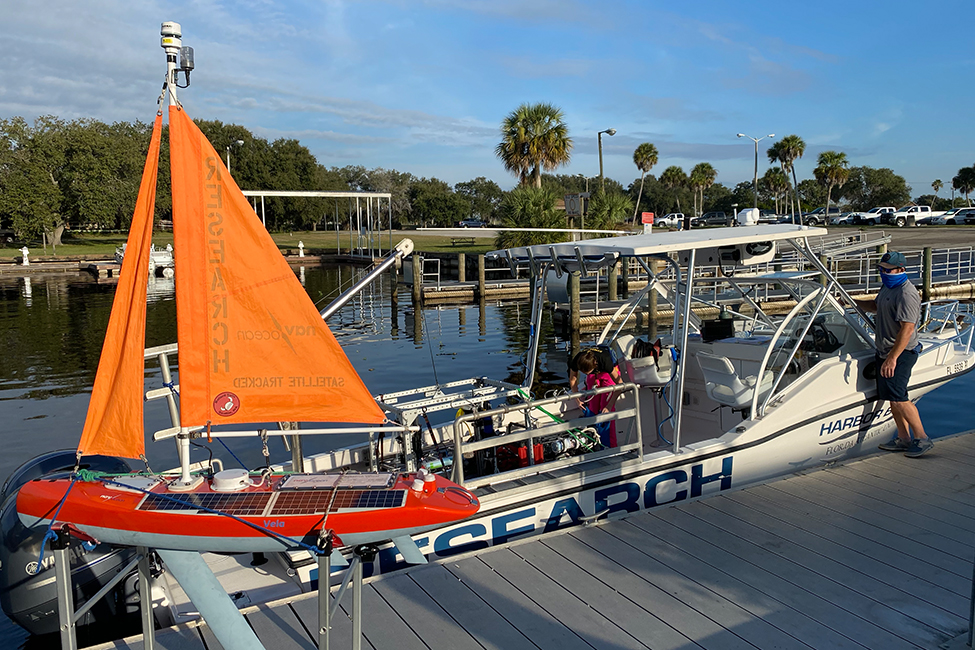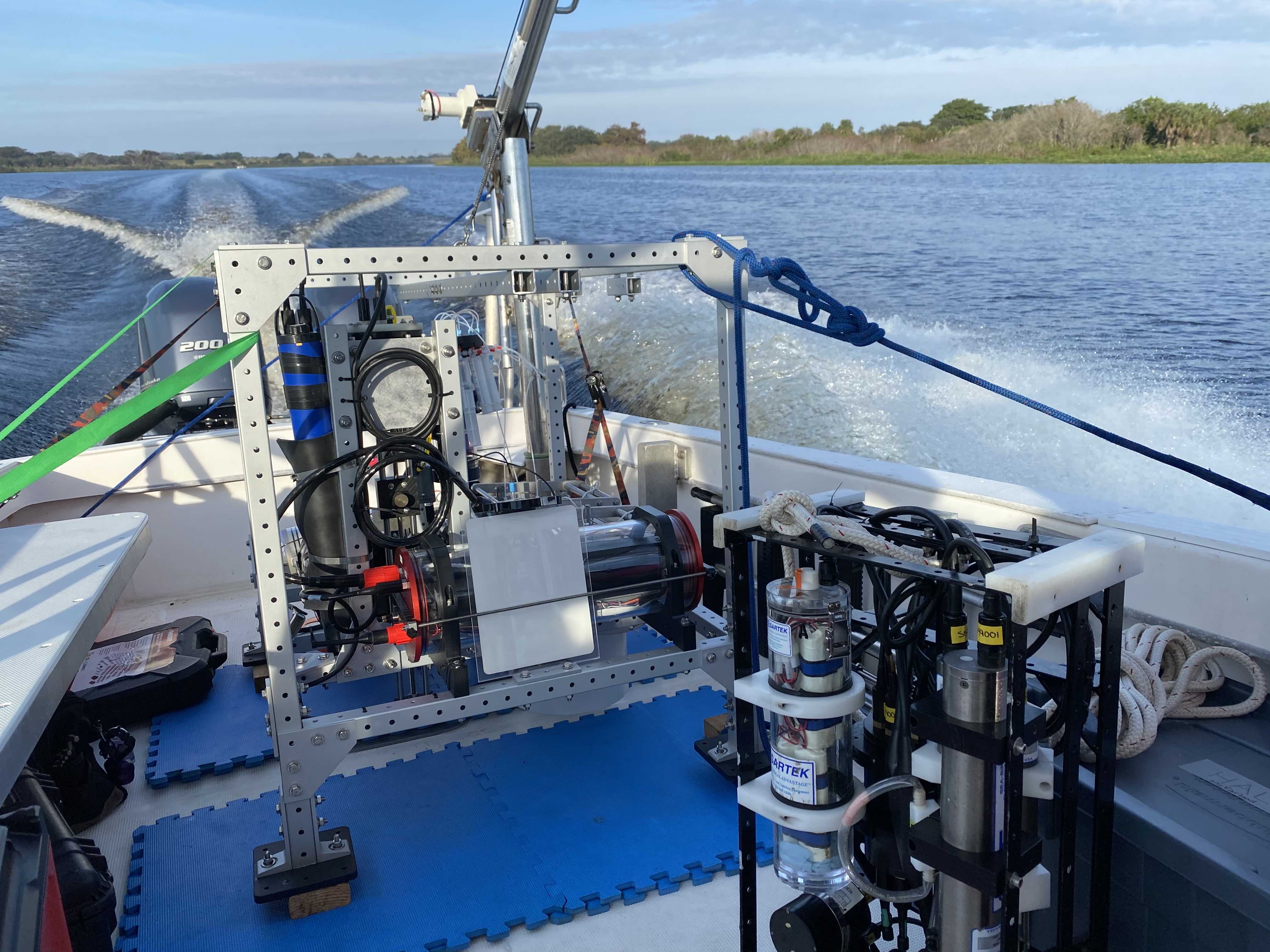PREDICTING HARMFUL ALGAL BLOOMS IN LAKE OKEECHOBEE
by Lynda F. Rysavy | Thursday, Dec 17, 2020
 Florida Atlantic University’s Harbor Branch Oceanographic Institute scientists are at the forefront of unraveling the mystery of what causes harmful algal blooms (HABs) in Lake Okeechobee. These toxic blooms wreak havoc on the economy, environment and human health, resulting in billions of dollars of damage. Their secret weapon? An innovative lake-bottom benthic lander designed to predict when and where toxic algal blooms might surface. The research team recently deployed this new tool in Lake Okeechobee to collect water and sediment samples for testing.
Florida Atlantic University’s Harbor Branch Oceanographic Institute scientists are at the forefront of unraveling the mystery of what causes harmful algal blooms (HABs) in Lake Okeechobee. These toxic blooms wreak havoc on the economy, environment and human health, resulting in billions of dollars of damage. Their secret weapon? An innovative lake-bottom benthic lander designed to predict when and where toxic algal blooms might surface. The research team recently deployed this new tool in Lake Okeechobee to collect water and sediment samples for testing.
“This deployment exercise was an all systems test that is the final culmination of our extensive efforts to develop a suite of innovative new technologies that we will be deploying in Lake Okeechobee next year to help us better understand, potentially predict, and in turn mitigate harmful algae blooms,” said Jordon Beckler, Ph.D., an assistant research professor at FAU’s Harbor Branch and a faculty fellow in FAU’s Institute for Sensing and Embedded Network Systems Engineering (I-SENSE).
On Wednesday, Dec.16, Beckler and collaborators deployed the lander to measure nutrient fluxes coming from the sediment, an optical profiling package to understand how light affects an algae bloom's growth, and an autonomous sailboat that is capable of mapping out a bloom in two dimensions. During the two-day deployment, divers also collected sediment cores from the bottom of Lake Okeechobee.
“The overall goal is to better quantify the controls and magnitudes of the sources of various nutrients for the algae blooms,” said Beckler. “The analyses we will perform on the sediment cores provide some new insights into how the geochemistry is controlling any fluxes of nutrients. The natural processes that occur in the top 10 cm of sediments are incredibly complex and the scientific community still has a whole lot to learn about how they might regulate nitrogen, phosphorous, or trace element fluxes.”
The project, titled “Harmful Algal Bloom Assessment of Lake Okeechobee (HALO),” is funded by a $2.2 million grant from the Florida Department of Environmental Protection’s (DEP) Office of Ecosystem Projects Harmful Algal Bloom Innovative Technology Program.
The HALO system provides a platform for not only visualizing blooms and providing information regarding the “environmental backdrop,” but will eventually provide the means to evaluate the progress of any future active bloom-mitigation efforts. The site will go live on Jan. 1, 2021 and will be accessible to the public.